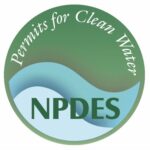
On Dec 6, the U.S. Environmental Protection Agency (EPA) issued guidance on how states can use the National Pollutant Discharge Elimination System permitting to monitor for per- and polyfluoroalkyl substances (PFAS) discharges into water and how to reduce pollution when PFAS is detected.
This work builds on a proposed rule issued in September of 2022 to designate two PFAS, perfluorooctanoic acid (PFOA) and perfluorooctanesulfonic acid (PFOS), their salts and their structural isomers, as hazardous substances under the Comprehensive Environmental Response, Compensation, and Liability Act (CERCLA), also known as Superfund.
What is included in the guidance?
The memo recommends that states use the most current sampling and analysis methods in their NPDES programs to identify known or suspected sources of PFAS and to take actions using their pretreatment and permitting authorities, such as imposing technology-based limits on sources of PFAS discharges.
How does this fit in the EPA PFAS Strategic Roadmap?
Leveraging the NPDES permit program will be instrumental in identifying PFAS at the source, reducing the levels of PFAS entering wastewater and stormwater systems and ultimately lower people’s exposure to PFAS through swimming, fishing, drinking, and other pathways.
Working through the NPDES permitting program will also benefit data collection for the EPA to better understand sources and quantities of PFAS discharges.
Learn more about PFAS
The National Groundwater Association: PFAS and drinking water
EPA: Strategic roadmap for addressing PFAS
